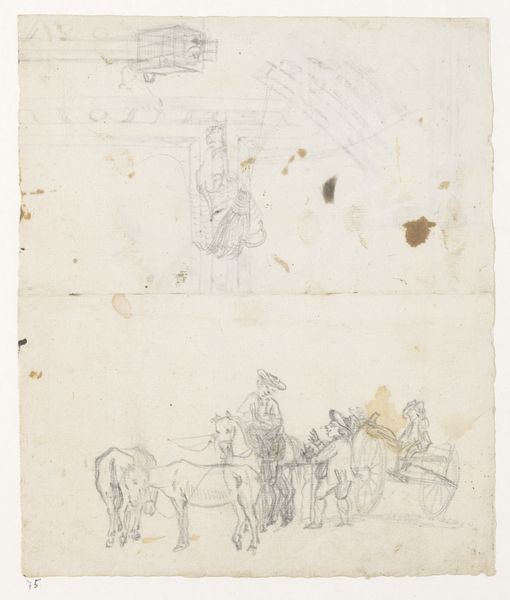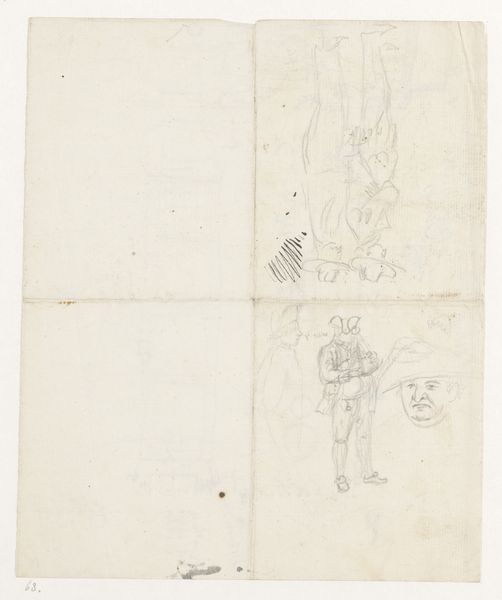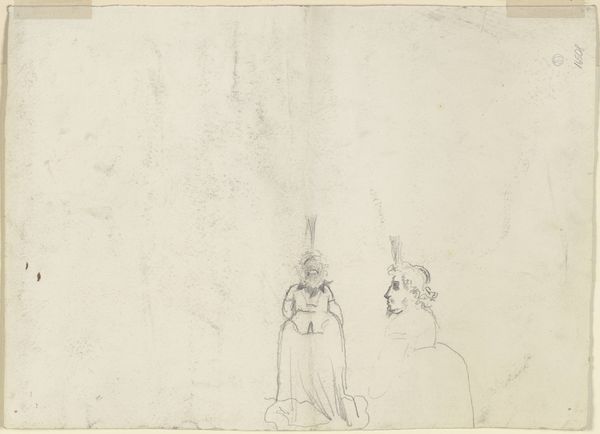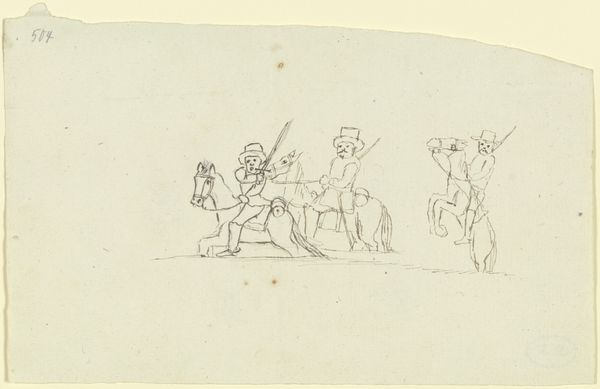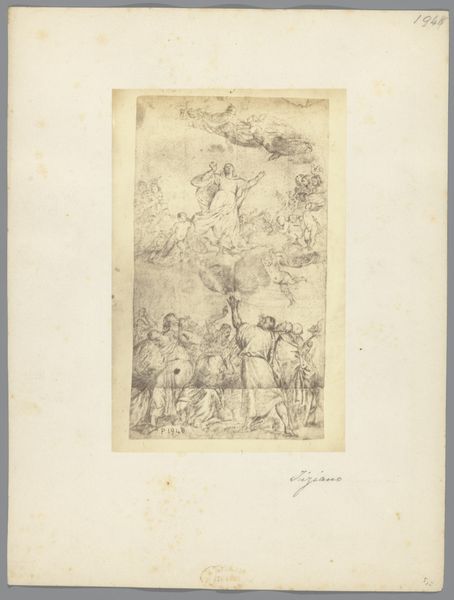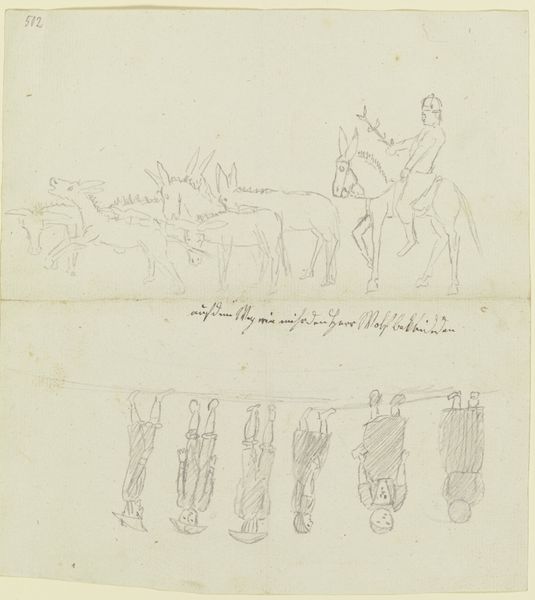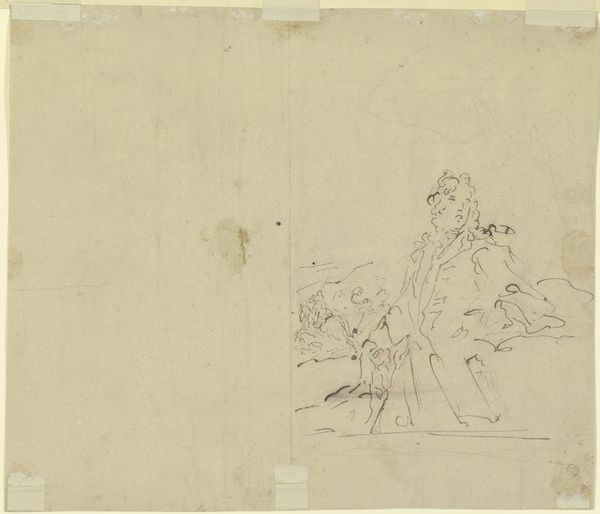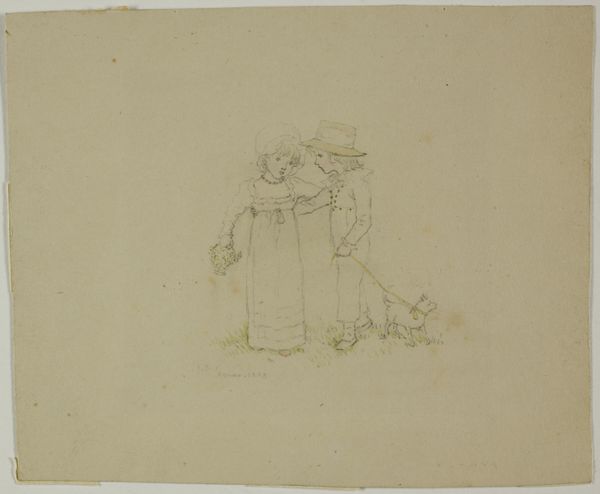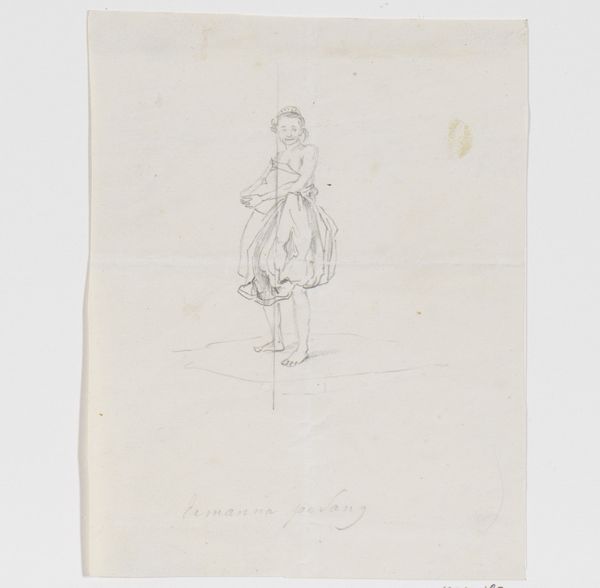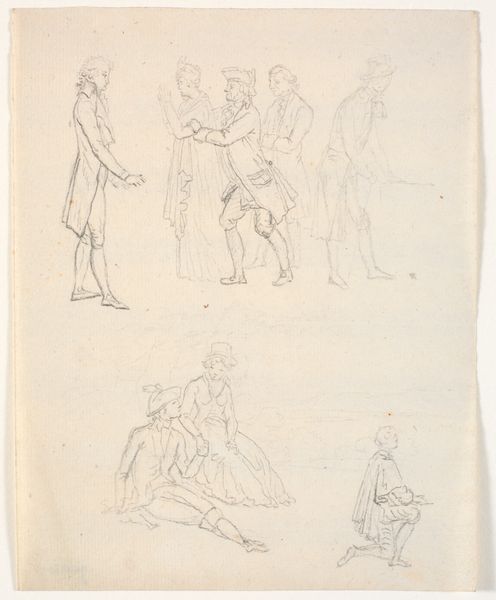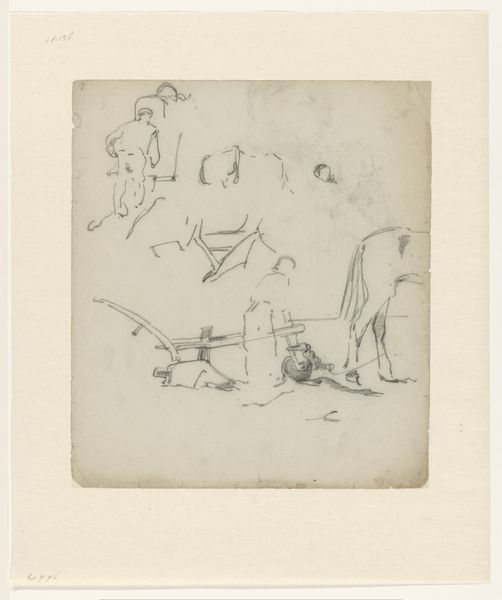
drawing, paper, pencil
#
portrait
#
drawing
#
narrative-art
#
pen sketch
#
paper
#
pencil
#
genre-painting
Dimensions: height 415 mm, width 325 mm
Copyright: Rijks Museum: Open Domain
Editor: This is "Schetsblad," a page of sketches made with pencil and pen on paper, dating from 1770 to 1808 by Jan Brandes. It's a series of vignettes; the largest depicting what looks like figures from a play or historical scene. What strikes me is the seeming randomness of the groupings... what's your read? Curator: Consider the material conditions: paper, pencil, pen. Brandes isn’t just creating "art," he's *using* these materials. This sheet wasn't destined for a gallery. It’s a record of process, a site for experimentation. How do the figures interact with each other and the material itself, its cheap availability? What's communicated is less about "high art," and more about accessible material's impact on 18th-century image-making, almost like early notes on character design. Editor: So you're saying that by looking at the materials, we're understanding something about access and even the commercial aspect of artmaking at the time? The types of papers that were available for preliminary works of art? Curator: Precisely! And about labor too. Was Brandes working alone, or within a workshop? What does this sketch tell us about his status, his patron's desires? How might cheap readily available materials democratize who got to create art? The content might seem aristocratic, but its production could tell a different story. Editor: That really changes my understanding! I tend to get so focused on subject matter but viewing it as a material object impacted by socioeconomic conditions adds so much nuance. I’ll be thinking about this for days! Curator: Excellent. Approaching art through material analysis unveils unseen connections, between labor, class and image, fostering a deeper comprehension of art's role in shaping, and being shaped by, its cultural landscape.
Comments
No comments
Be the first to comment and join the conversation on the ultimate creative platform.
